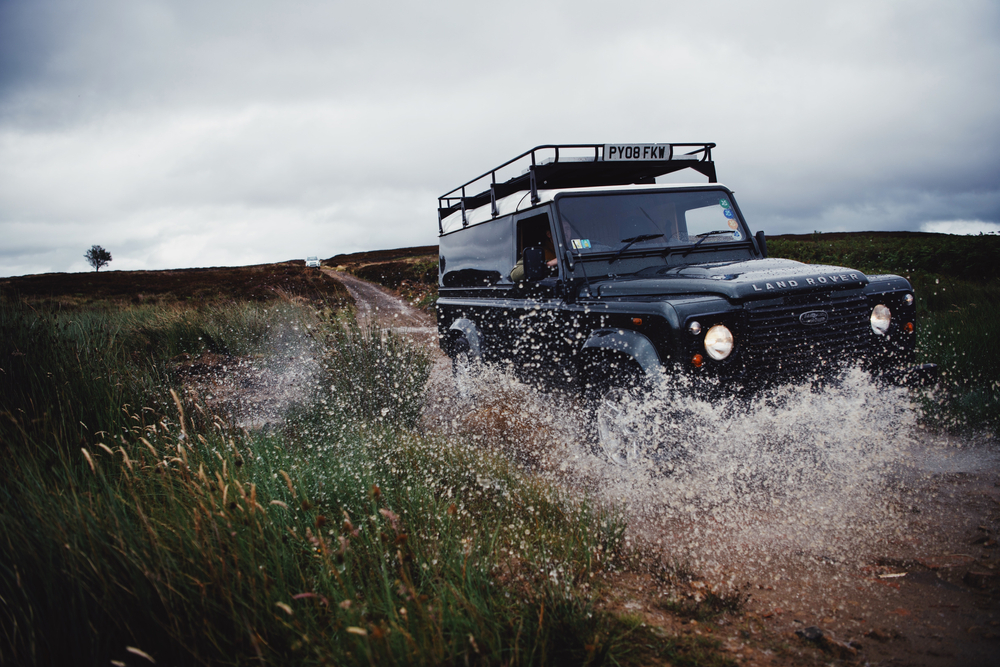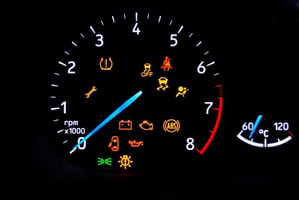Whether you’re behind the wheel of a modern Defender or a much-loved classic one, the dashboard is...
If you’re a Defender owner with a taste for adventure and a love for the British countryside, then green laning might just be your perfect weekend activity. It’s an increasingly popular way to enjoy the great outdoors, while testing your vehicle’s off-road capabilities - and, of course, exploring parts of the UK that you might otherwise not get to see so easily. But what exactly is green laning, and where can you do it? Here’s what you need to know…
What is green laning?
Green laning involves driving on legal, unpaved routes known as ‘green lanes’. These are historic rights of way, typically unsurfaced tracks or rural byways, that are open to most vehicles. They’re often scenic, sometimes challenging, and can range from wide gravel tracks to narrow, muddy trails bordered by hedgerows and stone walls.
Is it different to off-roading, you might ask? Well, yes. Green laning allows for legal driving on certain public highways with road-legal vehicles. Off-roading typically involves driving on private land or through organised events and can involve vehicles that aren’t legal to drive on the road.

So how do I go about it?
1. Choose the right vehicle and set up
Well, it’s got to be a Defender, right?! While you can green lane in many 4x4s, Land Rovers are of course ideal due to their robust build, high ground clearance and ability to withstand a few good bumps and scrapes. Ideally your Defender will have a comfortable-enough interior, too.
You’ll need decent tyres, too, of course - something with good traction. To help with this, letting some air out (around 18–22 psi) can improve traction on soft ground, but remember to re-inflate before returning to normal road surfaces. Remember to engage low range early when tackling steep climbs or rocky sections, to maintain control. Watch for any low-hanging branches and overgrown hedges that can scratch your paint or damage your roof rack.
Make sure you know your vehicle’s wading depth, too, before you set off, and that it’s been regularly serviced and has a current MOT.
2. Know the rules
Not all off-road-looking tracks are open to all vehicles. Only routes with Byway Open to All Traffic (BOAT) status or Unclassified County Roads (UCRs) are legal for motor vehicles to use for green laning. Driving on footpaths or bridleways is strictly prohibited and could result in you getting a fine or being prosecuted.
If your green laning activity isn’t an organised event, try to travel in small groups - about 3 or 4 vehicles are ideal. Larger convoys can cause damage and attract negative attention. Remember to be courteous to walkers, cyclists, and horse riders, and pass wide and slow.

3. Get a decent map
Use an up-to-date OS map or a digital tool such as View Ranger, which show byways clearly. Make sure you know how to read and interpret the map symbols, and where boundaries are, and that the routes you fancy taking are suitable for your rights as a driver of a mechanically propelled vehicle (MPV).
Some lanes are seasonal or will be closed due to erosion or legal disputes - and, be aware, just because they are shown on a map, it doesn’t mean they are drivable or indeed wide enough for your vehicle!
All councils will hold Definitive Maps showing all routes and restrictions in their Rights of Way department, which you can request to view, and then mark up on your own maps to take home.
4. Join a club
You can join a club like the the TRF (Trail Riders Fellowship) or the Green Lane Association (GLASS) for access to TW2, which is a database of green lane legal routes you can follow. It’s only around £48 for membership of the Green Lane Association, which is great value as they can give you loads of advice on planning a route.
Also, always check local council websites before you set off for up-to-date access info and any Temporary Traffic Regulation Orders (TROs) which may close certain lanes.

5. Prepare for the unexpected!
Always have a plan for what you will do if you get stuck in a rut or a ditch…
It’s a good idea to carry recovery gear (like a tow rope, shackles and shovel), but only attempt self-recovery if it’s safe to do so. Take a paper map, food and water, first aid kit, warm clothing and a fully-charged phone with you. The paper map is necessary as you may be out of signal range in some remote areas.
Also, prepare to be approached by people who may think you are not entitled to be doing what you are doing! A simple explanation should suffice, especially if you can show them your map and membership body that you belong to.
If you come across an obstruction, such as fallen branches, you can move it to pass through but you must leave any wood on the verge as it belongs to the land owner. If you find any significant obstructions, you can report these to the membership association you belong to, to make others aware. Leave gates as you find them (be that open or closed) and respect farmers’ property.
A lot of fun is to be had, that’s for sure! Green laning offers a unique way to blend your love for your Defender with the rugged beauty of the British countryside. Whether you’re seeking a gentle drive through some rolling hills or a technically-challenging trail, there’s definitely a green lane adventure out there for everyone!






